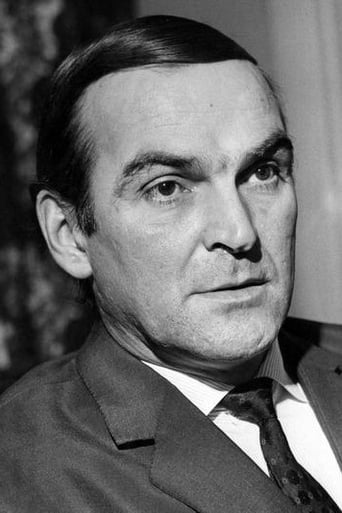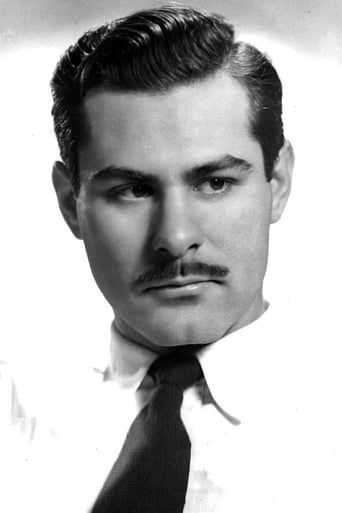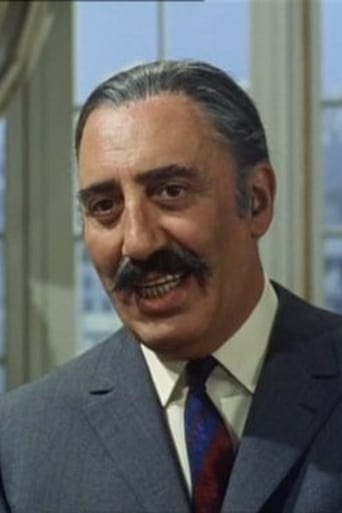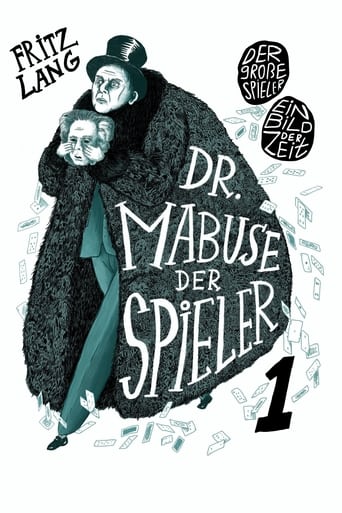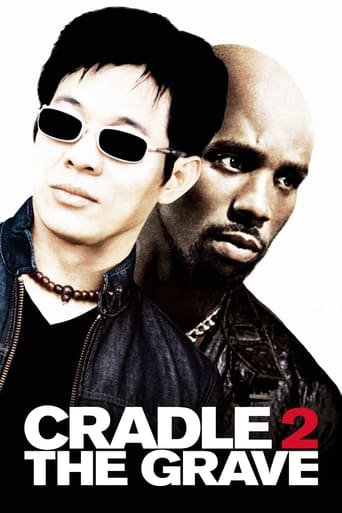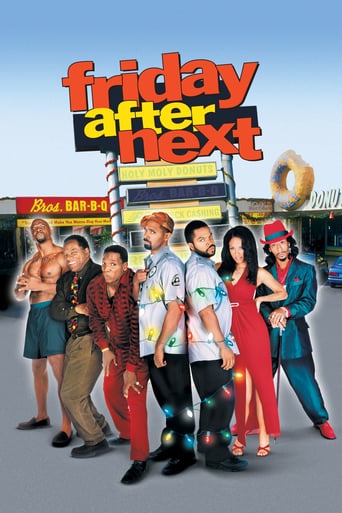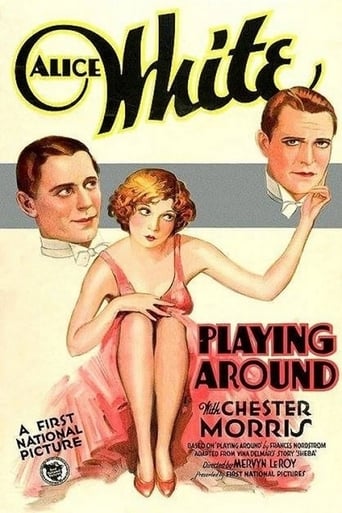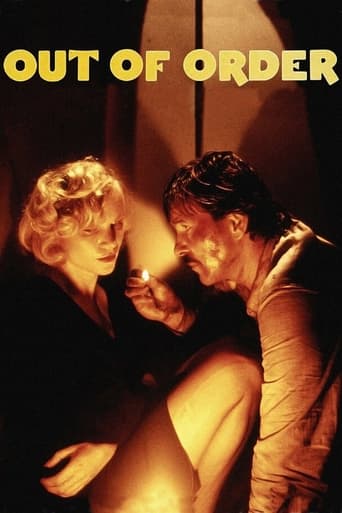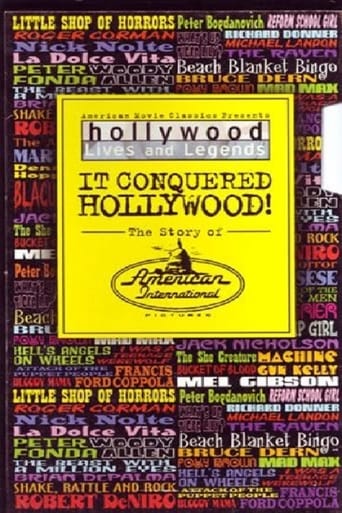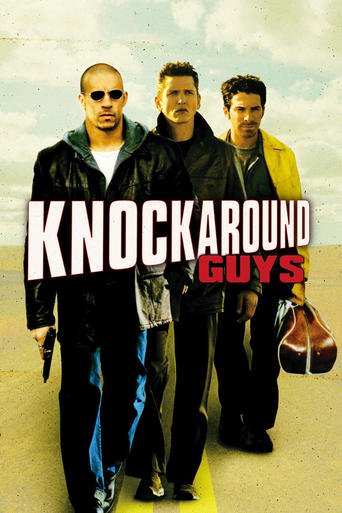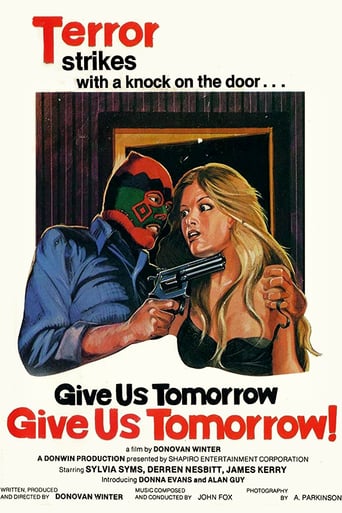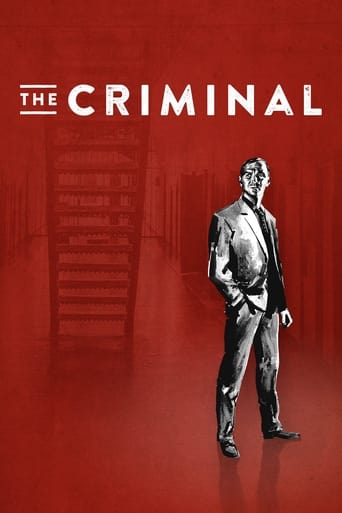

The Criminal (1960)
When a robbery at a racetrack goes wrong ex-con Johnny Bannion is caught and sent back to prison. He won't tell the rest of the gang where he has stashed the loot leading to violent consequences.
Watch Trailer
Cast


Similar titles
Reviews
Very disappointing...
Fantastic!
Expected more
what a terribly boring film. I'm sorry but this is absolutely not deserving of best picture and will be forgotten quickly. Entertaining and engaging cinema? No. Nothing performances with flat faces and mistaking silence for subtlety.
Stanley Baker is convincing as a brutal villain, but it looked to me that he could easily have been nobbled by several of his prison inmates. There's a lot of talk that attempts to sew the plot together, but not a lot of action - and I don't mean fights and car chases, I mean the difference between taking the audience on a cinematic journey as opposed to being told what's happening by the dialogue. There's too much telling and not enough showing. Several of the set-pieces in this essentially crime/gangster genre story are clumsily handled. The robbery is poorly covered: we don't know what the plan is, or what the perpetrators are up against, plus several opportunities for high tension are muffed. In the prison, the conflicts are fairly well developed and realised, but often they're stagey or overwrought. Gregoire Aslan is an excellent 'capo' and there is some good character work by the supporting cast, but there is also some woeful acting. The general statement of this film is that this is a grim, bleak, violent society in which ordinary man is always imprisoned - that part works, but as a drama or a thriller it's clunky and uneven. An under-developed script, some patchy, but energetic direction, and a generally excellent job of anamorphic lensing by Aussie Robert Krasker.
When I was in Hollywood late last year, I managed to watch Losey's classic sci-fi THESE ARE THE DAMNED (1963) - surely Hammer Films' strangest release; at the time, while I had been sufficiently impressed with the film (despite the poor quality of the print I came across but, at least, it was the full-length version!), I had also found the experience somewhat overwhelming.I couldn't quite explain why I felt this way but, having now watched this contemporaneous title (which, in comparison to the fanciful apocalyptic narrative of THESE ARE THE DAMNED, is a relatively straightforward crime drama of the prison/caper variety), I realized that it was due to the essential stylization of Losey's mise-en-scene which, apart from giving a heightened sense of reality to the already intense proceedings, also rendered the film guilty of a certain pretentiousness (marking virtually every scene) not found in similar genre efforts, certainly British-made - demonstrating a definite change of attitude in cinema towards a greater sense of artistry but also more lenient censorship (the sex and violence in this particular film, while not especially graphic by the standards of even a few years later, are clearly more pronounced than in the previous decade)! Still, to be honest, all of this actually serves to make the film doubly arresting - particularly during this gritty phase of Losey's career (his statelier later work grew increasingly more opaque).What a cast! Stanley Baker was never better than as the almost legendary con whose individuality makes him an outcast even among his own kind, and he's surrounded by some very fine actors - most notably Sam Wanamaker (as his contact on the outside but who harbors ambitions of taking over the gang), Patrick Magee (his first impressive role as a corrupt and menacing prison warden), Gregoire Aslan (as the ageing mobster who rules the underworld even from inside the penitentiary and to whom everyone - Baker included - must acquiesce) and Nigel Green (as Baker's double-crossing associate). Surprisingly, the supporting cast is peppered with faces familiar from several horror films like Rupert Davies (WITCHFINDER GENERAL [1968]), Edward Judd (THE DAY THE EARTH CAUGHT FIRE [1961]), Murray Melvin (THE DEVILS [1971]), John Van Eyssen (HORROR OF Dracula [1958]), Noel Willman (THE KISS OF THE VAMPIRE [1963]), Kenneth J. Warren (THE CREEPING FLESH [1973]) and Patrick Wymark (THE BLOOD ON SATAN'S CLAW [1971]).Speaking of which, Hammer Films stalwart Jimmy Sangster reportedly contributed to the excellent screenplay (actually credited to A HARD DAY'S NIGHT [1964] scribe Alun Owen!). The film's remarkable and claustrophobic black-and-white cinematography is by the great Robert Krasker (Oscar winner for THE THIRD MAN [1949]). Another big plus is Johnny Dankworth's jazzy score, featuring a recurring ballad sung by Cleo Laine.While essentially character-driven, the film's seedy milieu and sadistic streak allows for a number of vivid sequences (though the race-track robbery itself is rather thrown away!) including the wild party held at Baker's flat on being released from prison (highlighting sexy Margit Saad who subsequently replaces Jill Bennett as Baker's moll), the equally chaotic prison riot, Baker's escape from the penitentiary (having been betrayed after the robbery and recaptured) and the inevitable showdown with the ruthless Wanamaker.Unfortunately, apart from the theatrical trailer and admittedly extensive talent bios for both Losey and Baker, the Anchor Bay DVD is a bare-bones affair; pity neither of them is around anymore (Baker died far too young in 1976 at age 49 and Losey, already in his 50s when the film was made, followed him in 1984) to have been involved in this otherwise sparkling edition! Having watched THE CRIMINAL and, more recently, Losey's SECRET CEREMONY (1968), I've rekindled my interest in this important director's work: I have four of his films as yet unwatched on VHS - THE BIG NIGHT (1951), THE ROMANTIC ENGLISHWOMAN (1975), DON GIOVANNI (1979) and LA TRUITE (1982) - and still need to pick up several of them on DVD - EVE (1962; unwatched...if I can find a copy of the Kino disc which includes two different cuts of the film, neither of them the complete 155-minute version!), THE SERVANT (1963), KING AND COUNTRY (1964; unwatched), MODESTY BLAISE (1966), ACCIDENT (1967), the upcoming THE ASSASSINATION OF TROTSKY (1972; unwatched) and GALILEO (1975; unwatched).
Joseph Losey's C.V. was nothing if not eclectic.Once considered by some critics as a major force in British Cinema,he can,with hindsight ,be seen to have been following trends rather than creating them for most of his career.Nonetheless,his films were,as a rule,recognisably the work of a considerable artist,albeit one working within the limits imposed by the studios,and within clearly defined genres. He was involved in film-making for 45 years,right up to his death in 1984. Blacklisted by the H.U.A.C.,Mr Losey brought a welcome dash of verve and inmagination to a fairly moribund British Film Industry. He could take a straightforward prison movie like "The Criminal" - destined to be a pot-boiler in the hands of many an English hack director - and turn it into a rather remarkable work. The British cannot do crime films.I know we think we can,and we certainly make enough of them,but the results give lie to the proverb that practise makes perfect.It's not enough to fill the screen with snarling professional Cockneys with tattooed fingers like bunches of sausages spouting rhyming - slang never heard outside of a script writer's study in Islington.Watch Britpop gangster films like"Lock,stock etc" or "Essex Boys" and you can scarcely hear the dialogue for laughter and the more ludicrously violent the film gets the more the audience laughs."The Criminal" is not noticeably risible. There is violence,but it is not comic book violence,it is the sort of violence that leaves it's victims scarred physically and mentally. There is real menace.Mr Stanley Baker and Mr Sam Wanamaker are hard men. Compared to them Mr Sean Bean is a pussycat,Mr Vinnie Jones a dilettante. It is not so much a film noir as a film gris,the exteriors shot in bright light,softening the contrast whilst retaining pin-sharp focusing.These shadings of grey reflect the moral ambivalence of the main characters.Only the truly unpleasant P.O. Barrow,played with hissing relish by Mr Patrick Magee,is shot in high contrast. Mr Stanley Baker is very convincing as a major criminal,hardly surprising when you consider he had been known to move in the same social circles as some of London's biggest villains.He makes no unnecessary gestures,remains aloof from his fellow prisoners,truly a man apart.You just know he won't be taking up those courses in basket weaving. The plot - such as it is - revolves around a "Thieves fall out" scenario familiar to moviegoers since the first train robber galloped across the flickering screen.It's familiarity doesn't matter,its what Mr Losey does with it that counts,after all,"Romeo and Juliet" wasn't exactly state of the art cutting edge audience challenging stuff when Shakespeare first got hold of it. Released at a time when British films were just about to enjoy a short - lived renaissance,"The Criminal" ended up being trampled under the feet of critics lavishing excessive praise on a succession of flat cap and whippet sagas that eventually disappeared up their own outdoor privy. Viewed at a distance of 45 years,Mr Wanamaker crossing the street in his camelhair coat is an image that will remain long after the last crumpled Woodbine is ground out in an overflowing ashtray in a smoke - filled changing room before the poor exploited hero runs out - coughing to play football/rugby league/pigeon racing in front of an audience of seven men and a dog - probably a whippet.
A haunting and unique depiction of prison and criminal life in Britain in the early 1960s. 40 years after its release I still wish to see this film. Before the Great Train Robbery and the prison riots of more recent times the violence and tension portrayed in the work seem to strike a very deep chord which anticipates these later events.


